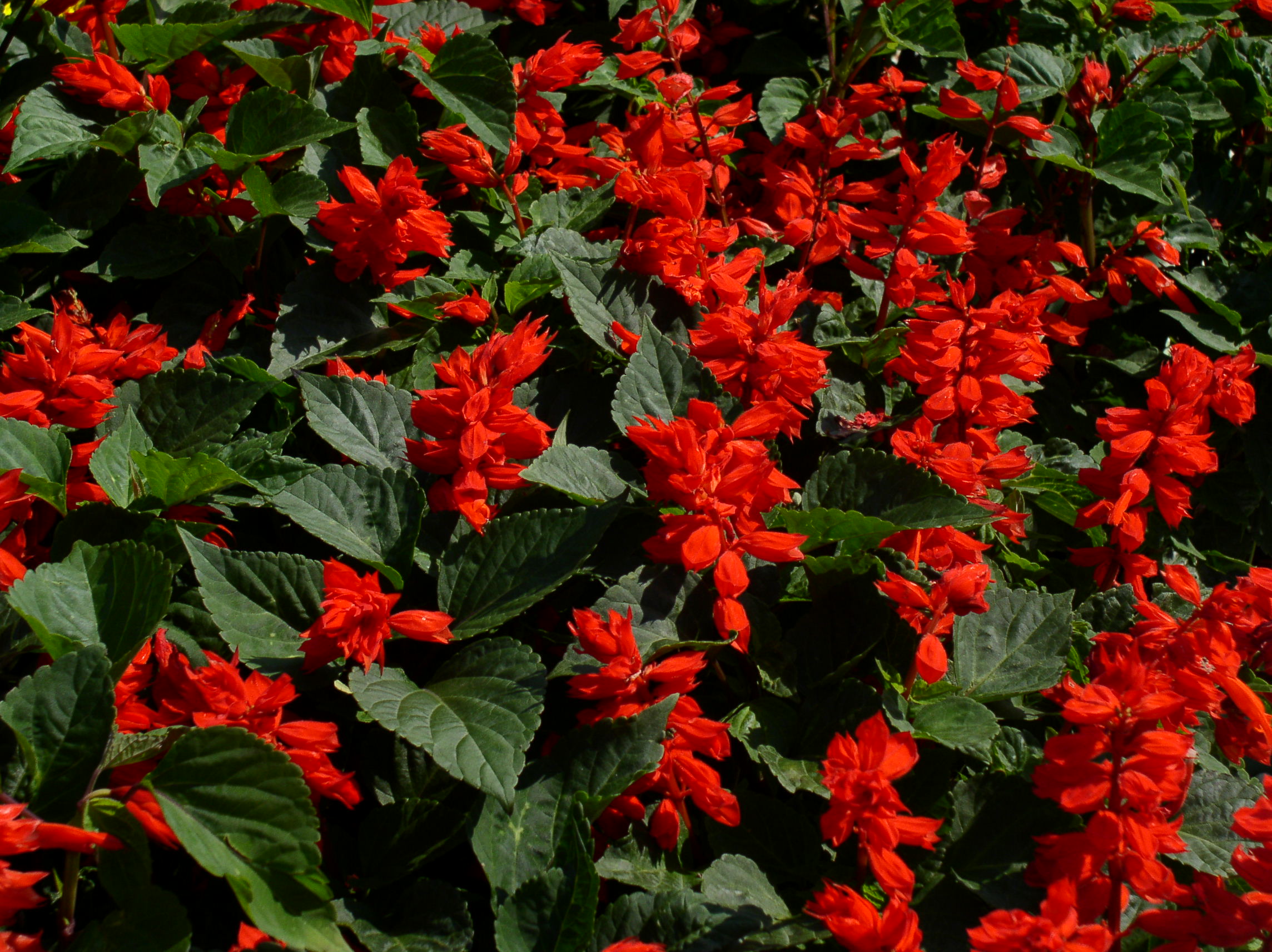- Salvia splendens
Taxobox
name = Scarlet Sage

image_width = 240px
image_caption =
regnum =Plant ae
divisio =Magnoliophyta
classis =Magnoliopsida
ordo =Lamiales
familia =Lamiaceae
genus = "Salvia "
species = "S. splendens"
binomial = "Salvia splendens"
binomial_authority = Sellow ex J.A. Schultes"Salvia splendens" (Scarlet Sage or Tropical Sage) is a species of sage native to
Brazil . It is a sub-shrubby orherbaceous perennial plant growing to 1 m tall. The leaves are arranged in opposite pairs, elliptical, up to 7 cm long and 5 cm broad, with a toothed margin. Theflower s grow on erect spikes up from the center of the plant in clusters of 2-6 together at each leaf node; they are bright red, tubular to bell-shaped, up to 35 mm long, with two lobes at the apex, the larger, upper lobe up to 13 mm long.Cultivation and uses
It is widely grown as an
ornamental plant , with a large number ofcultivar s selected for different flower color from white to dark purple. It is a tropical species which does not survive freezing temperatures as a plant, but can be grown in colder climates as an annual, reseeding itself very easily and requiring very little care. It likes full sun in cooler climates but may need partial shade during particularly hot summers.The main pests are
slug s, which can be a problem in moist environments.Psychoactivity
In recent years, there have been reports of
psychoactive properties found in "S. splendens" leaves.Fact|date=June 2008 The related "Salvia divinorum " has long been used for its psychoactive properties byMazatec people inMexico , and has been gaining popularity in the rest of the world.References
* [http://www.ars-grin.gov/cgi-bin/npgs/html/taxon.pl?70596 Germplasm Resources Information Network: "Salvia splendens"]
* [http://www.ocf.berkeley.edu/~llau/piecesofwork/plantmorph.html UC Berkeley: Observations on "Salvia splendens"]
*Huxley, A., ed. (1992). "New RHS Dictionary of Gardening". Macmillan.
* [http://www.sagewisdom.org/interview.html Interview with Daniel Siebert on "S. splendens" and "S. divinorum"]
Wikimedia Foundation. 2010.
